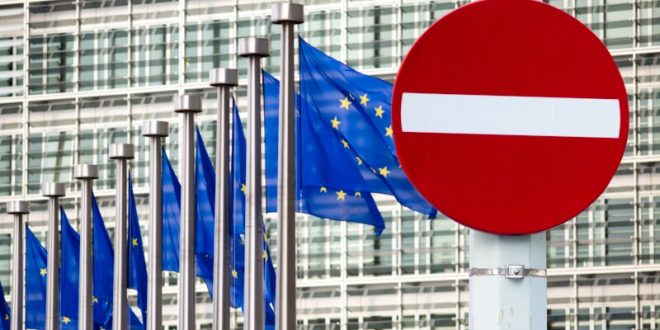Oil prices extended their rally on Tuesday after the EU agreed to ban most of Russia’s oil imports by the end of the year, raising concerns about a tighter market amid higher demand expectations in the summer.
Brent, the benchmark for two thirds of the world’s oil, was up 1.43 per cent at $123.40 at 8.46am UAE time on Tuesday. This is the highest rebound since the benchmark hit nearly $140 in early March.
West Texas Intermediate, the gauge that tracks US crude, gained 3.17 per cent to $118.70 a barrel.
European Council President Charles Michel announced on Twitter that the agreement to ban Russian oil exports to the EU was in response to Moscow’s military offensive in Ukraine.
The sixth round of sanctions require formal approval by the EU bloc’s 27 members, who are set to meet on Wednesday to iron out the details.
The sanctions forbid the purchase of crude oil and petroleum products delivered by sea but include a temporary exemption of pipeline crude.
“This immediately covers more than [two thirds] of oil imports from Russia, cutting a huge source of financing for its war machine,” Mr Michel said.
“Maximum pressure on Russia to end the war. The sanctions will immediately impact 75 per cent of Russian oil imports. And by the end of the year, 90 per cent of the Russian oil imported in Europe will be banned.”
This sanctions package includes other “hard-hitting measures” that include removing Russia’s largest bank from the global Swift payments system, banning three more Russian state-owned broadcasters and imposing sanctions on people responsible for “war crimes” in Ukraine, Mr Michel said.
Edward Bell, senior director of market economics at Emirates NBD, said the EU embargo on Russian oil “will serve to contain Russian oil output even more than the self-sanctioning that many importers have already adopted”.
With lockdowns easing in China and the latest EU developments, Craig Erlam, a senior market analyst at Oanda, said Brent could return to its early March highs.
“This doesn’t bode well for the global economy or inflation and if anyone is hoping OPEC+ step in this week, they are setting themselves up for disappointment,” he said.
Both Brent and WTI benchmarks have gained more than 70 per cent since last year on supply concerns, the Ukraine war and improved demand as global economies recover from the coronavirus pandemic.
China, the world’s second-largest economy and biggest importer of energy, has begun to ease Covid-19 restrictions as infection numbers in the country decline.
It plans to reopen shopping centres and shops from Wednesday in Shanghai, the country’s commercial centre.
The OPEC+ alliance, led by Saudi Arabia and Russia, is set to meet on Thursday and is expected to stick to plans to raise production by only 432,000 barrels a day.
OPEC+ cut output during the Covid-19 pandemic but has been restoring it gradually by about 400,000 barrels a day each month.
“If China is reopening, and Europe is limiting Russian oil, there is only one obvious direction from here, for too long, ignored by markets,” said Jeffrey Halley, a senior market analyst at Oanda.
“Only a surprise Iran deal, unlikely as they are seizing tankers at the moment, or a capitulation to Venezuela’s autocratic government, could change the supply/demand dynamic. Neither would alleviate the squeeze in refined products underpinning the rally.”
Naeem Aslam, chief market analyst at Avatrade said traders would be paying close attention to the oil and supply equation in the eurozone.
“In terms of the technical price level … the next resistance for the Brent oil price is $125, while the support is at $109,” Mr Aslam said.
The rally in oil prices along with the war in Ukraine have fuelled a rise in food costs and commodity prices globally, exacerbating inflationary pressures.
Last week, against the backdrop of rising inflation that hit a 40-year high in the US and the UK, as well as a record level in the euro area, the Group of Seven (G7) countries urged OPEC to boost their oil output.
Global food prices reached their highest ever level in March 2022 before edging lower in April, according to the UN Food and Agriculture Organisation. The FAO’s food price index averaged 158.2 points in April, down 0.8 per cent from the surge in March, but remained nearly 30 per cent higher than in April last year.

 Iran Energy News Oil, Gas, Petrochemical and Energy Field Specialized Channel
Iran Energy News Oil, Gas, Petrochemical and Energy Field Specialized Channel



